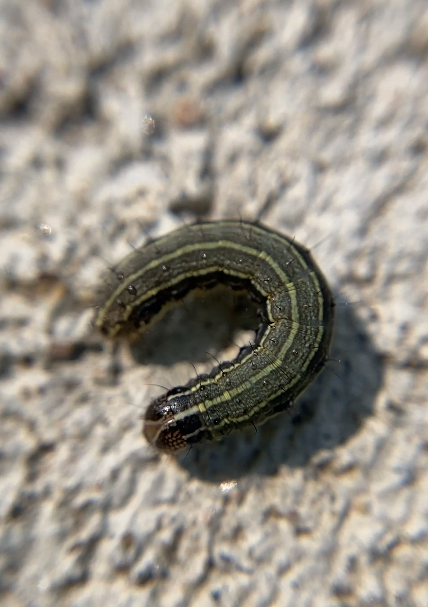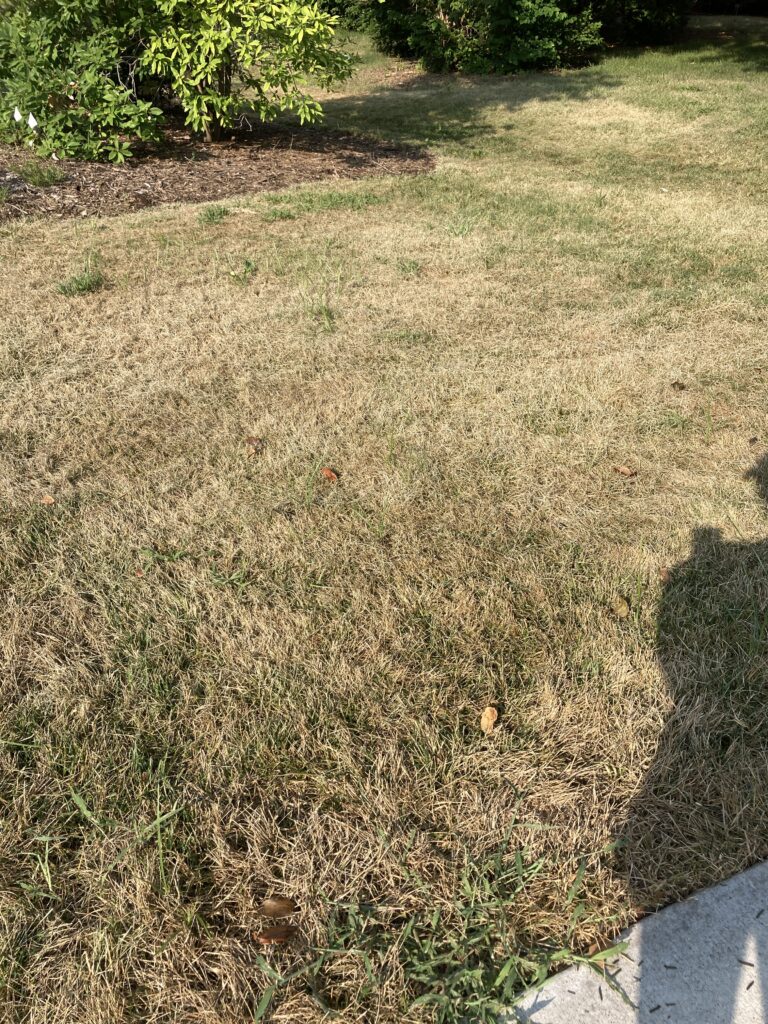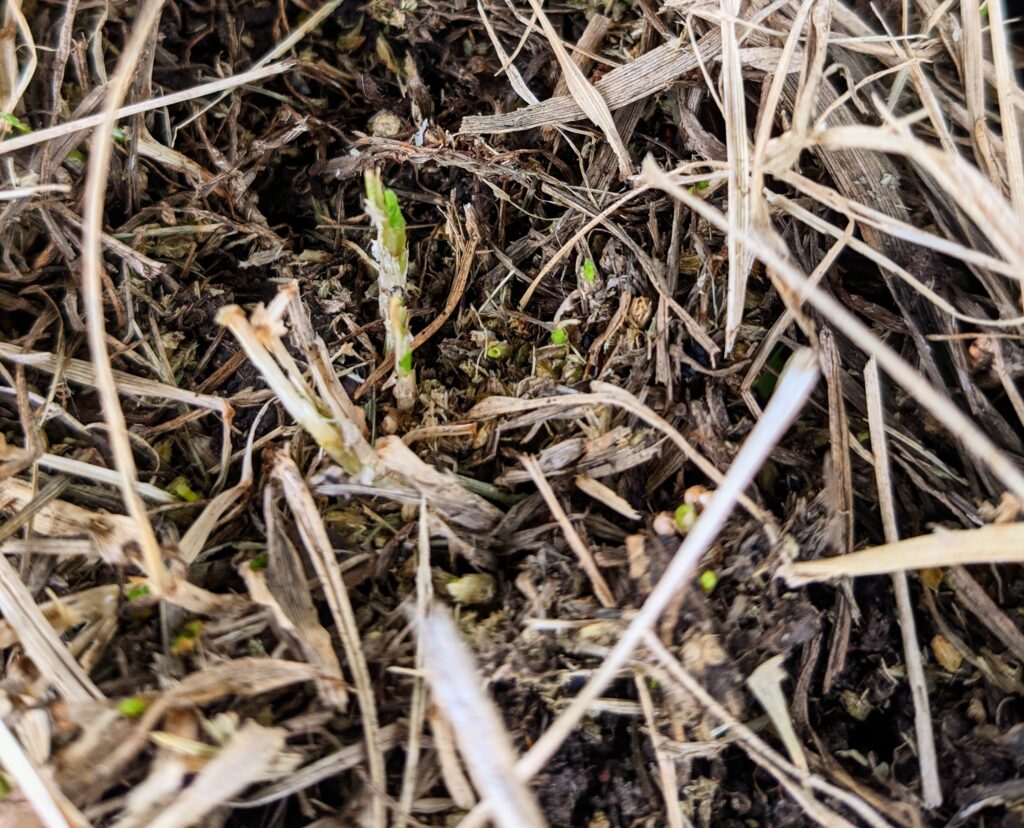The Arboretum is under siege! An army has invaded, demanding we relinquish our lawns! Army worms, that is. These pesky creatures can cause major damage, and they unfortunately have a taste for fescue. Last week we came upon a sidewalk full of worms, crawling out of the lawn in search of more food. The grass was a sea of them, their tiny movements making it seem like the ground was alive.

Army worms have a distinctive ‘Y’ marking on their heads
and are usually found feeding in groups.
To Spray or Not to Spray
I am always a big advocate of lassez-faire when it comes to controlling insect populations. After all, “plants are meant to be eaten”, right? And every insect has its place in the food web to keep our ecosystem thriving. I say this every time our members call asking about why their coneflowers have holes in the leaves, or why their Zizia has been defoliated. I tell them not to panic, that bugs are good to have in a garden, and that with enough good habitat natural predators will help keep the populations in check.
But when populations explode overnight, it can rightly cause concern. Native perennial flowers have deep tap roots that can reach 10 ft deep and beyond, which means they easily recover from a bit of nibbling. Fescue does not. The root zone is often less than 2ft, and in the heat of summer it can get even shorter. These little bugs can cause big damage! But luckily they rarely kill the grass. According to KSU Extension and Research, they don’t usually eat into the crown of the plant, rather move on to more tender greens. This means the plant can regrow and recover once they leave.
Fall armyworms seldom kill grass ---- rather, than nubbing a plant
down to the crown and growing point, larvae will select a more tender adjacent grass
blade to feed upon. Of course, under heavy feeding pressure, larvae may be forced to
feed deeper down on a plant, but usually, when the food supply becomes scarce or
"tough", the larvae will move "in mass" to adjacent areas where there is a "fresh stand"
of food to feed on.
- Kansas State University Agricultural Experiment Station and Cooperative Extension Service

This lawn was green and lush 72 hours before this photo was taken, an example of how quickly these little worms can feed.

Stay tuned for updates in the coming weeks.
Use a Targeted Pesticide
Insecticides containing acephate and spinosad are effective at killing caterpillars, but we opt for friendlier treatments since these are known to harm the bees, birds and butterflies that call the Arboretum home. To avoid unnecessary kill off of non-target insects, I use Bt: Bacillus thuringiensis. This is a biological pesticide that uses bacteria to infect the gut of the army worm. In the alkaline gut environment of insects, it turns toxic and gives them a terminal tummy ache. We also use this around the Arboretum to keep bagworm populations in check when they start to overwhelm our cedar trees. According to current research on Bt, it is non-toxic to humans, pets, birds, and fish. It also has a short life once sprayed, which means reapplication is necessary, but also ensures you aren’t killing more insects than you intended to.
Monoculture Dilema
This is the precisely the problem with monoculture lawns. They require consistent maintenance, chemical and physical, to achieve that uniform, western European ideal of ‘perfection’. As we consider seeding new grassy areas of the Arboretum, we may be looking to a fescue mix, or a seed mix that includes sedges and native grasses together. This means that if an infestation comes along, hopefully not all species in that mix will be palatable and leave some green behind while the rest of the species recover.
If you see a few army worms here and there, don’t panic. Only large populations require a chemical response. But to those of you who will encounter them by the millions this summer like I did, good luck!
